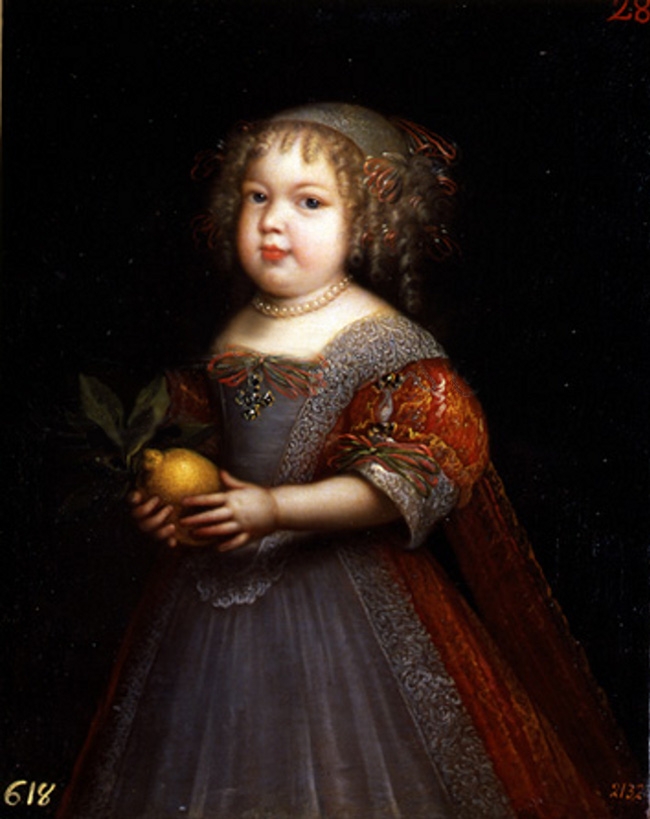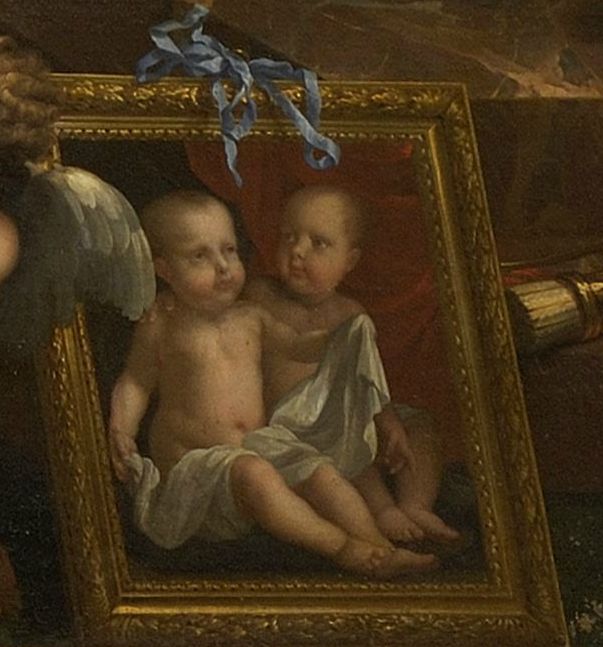Marie-Angélique de Scorraille de Roussille, Duchesse de Fontanges
Born in July 1661, a few months before Louis XIV’s heir was born, Marie-Angélique was to become the last great love of the Sun King and suffered an early and mysterious death aged only twenty.
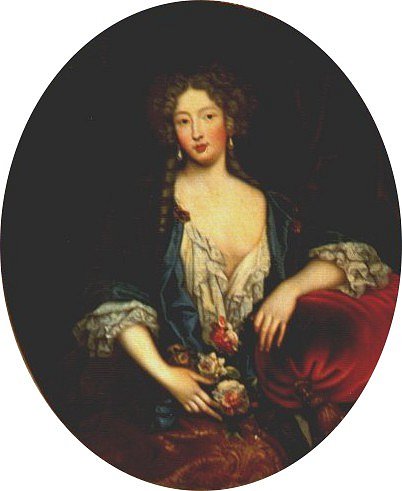
Marie-Angélique was born at the at the Château de Cropières in Upper Auvergne to Jean-Rigal de Scoraille, serving as Lieutenant to the King in the Auvergne, and Aimée Eléonore de Plas. Her family was quite prominent and one of the oldest of the Auvergne, flying a dashing coat of arms of a golden head on azure with three golden fleur-de-lis. Already as a child, Marie-Angélique’s beauty was noted, which gave her parents the idea to bring her up with everything necessary to become the King’s mistress one day. After all, she was born at the time Louis XIV began to openly display his relationship to Mademoiselle de La Vallière and afterwards his relationship with Madame de Montespan. A bit of a scandal, but if those ladies managed to gain the King’s love, Marie-Angélique was certainly a match for them as pretty as she was.
From her father, Marie-Angélique was given the right to call herself Mademoiselle de Fontanges, after the fief of Fontanges, which he had inherited from his mother Guillemine de Fontanges, and at the age of seventeen Mademoiselle de Fontanges became part of the Sun King’s court. A cousin of her father, César de Grollée, saw her during a visit and was so captivated by her beauty, that he proposed to take her to court… always keeping in mind that if she should indeed catch the eye of the King, their family might prosper. Mademoiselle de Fontanges herself was quite taken with the idea of living at court as well, because although their family was old and noble, they still had not too much money at their disposal and a life at court might change that. Pretty gowns, nice hairdos, pearls and ribbons… perhaps someone would propose to her and she would marry into a rich family. Her beauty, described as worthy to seduce a King, would do the trick.
Shortly before leaving for the promised land, Mademoiselle de Fontanges apparently had a dream which showed her what to expect. In this dream she found herself on the top at a giant mountain and gazed at a majestic cloud, completely taken by it. She woke with a feeling of doom and rushed to her confessor, who told her what she saw was the court and that great splendour would await her, but will not last long if she does not stay true to God… otherwise eternal darkness will await her.
Marie-Angélique carried this warning to Paris with her, where she lodged with the Duchesse d’Arpajon and was shortly after introduced to court and the King’s sister-in-law. At the time of her arrival, Louis XIV was in a bit of a odd situation. He could not quite decide if he should stick to his official mistress Madame de Montespan or instead go for Françoise d’Aubigné, the governess of the children he had with Madame de Montespan. He liked them both, but la Montespan had become a bit too demanding for his taste and the other option was a bit too pious. His sister-in-law took Mademoiselle de Fontanges as one of her demoiselles d’honneur on October 17 in 1678. She is as “beautiful as an angel, with a good heart, but stupid as a basket” said Liselotte von der Pfalz about the new member of her household and added later “You could not see anything more wonderful than her.” Marie-Angélique made quite the impression on everyone. The Baron Spanheim even described her as “very much above all that had been seen at Versailles for a long time.”
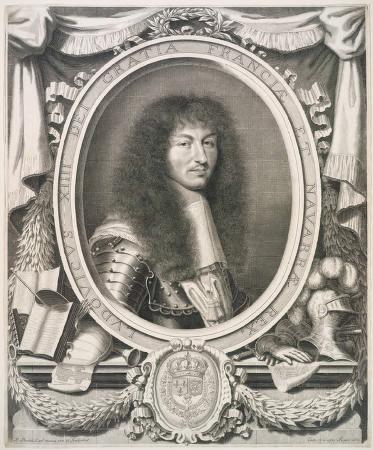
As desired by her family, Marie-Angélique’s beauty did eventually wake a longing in the royal-groin-area, but it actually took the current mistress to point Louis XIV towards Mademoiselle de Fontanges. La Montespan noticed the young and pretty thing at once and, as she had done before with others, shoved her into the general direction of the King. A big mistake, as it turned out later. The Marquise thought, since Marie-Angélique was indeed stupid as a basket, she would never manage to captivate the King for long…. but she would be perfect to distract him from Madame de Maintenon for a while and afterwards, he would return to her anyway. It had worked like that in the past. Louis XIV however, was not too interested in first. He had a bit of a flirtation going on already with a other member of Liselotte’s demoiselles d’honneur. A certain Uranie de La Cropte-Beauvais. The Sun King was quite captivated by her, but she did not welcome his advances. He did his best and got one refusal after the other. Eventually he got bored with trying and turned his gaze to Mademoiselle de Fontanges, someone who was more willed to succumb to his courting.
Matters of love, if they involve the King, never went the direct way. The Duc de La Rochefoucauld, who Louis regarded as friend, was charged with the task of making Mademoiselle de Fontanges aware of the King’s interest and gifted her a pair of beautiful pearl earrings and a pearl necklace on his behalf. Her answer was affirmative and a secret rendezvous was arranged. It took place one lovely autumn evening as la Montespan was distracted by a game of bassette. Louis slipped in all secrecy out of Versailles and into a carriage en route to Paris, where he met Marie.Angélique in her rooms at the Palais-Royal. Although rather willed, Marie-Angélique did her very best to act innocent and pious, like it was expected, as she was confronted with the burning royal desire. There is even a pamphlet about the matter, describing it a little like a battle scene in which, after much fighting, sweating, fatigue, and bloodshed, the trenches were opened and the King entered victorious, adding that no other conquest ever gave him so much trouble, many tears were shed and never have more sweet sighs left the lips of a ‘dying-virgin‘.
Louis XIV was not exactly a young man anymore. He had somewhat settled and his days of great gallantry and love conquests were over, but something in Marie-Angélique, may it be her beauty or her youth, made him feel young again and as if he could conquer the world. Thus he did not keep the affair secret for long, around three weeks, and swiftly introduced his new love to his wife. Louis started to wear diamonds again and decorated himself with ribbons matching whatever colour of gown she wore. The court rejoiced as neglected amusements and balls returned, all dedicated to Marie-Angélique, and rushed to her with all sorts of flattery and promises of support. Marie-Angélique became en vouge, much to the annoyance of Madame de Montespan, who still did not see her as too much of a threat but was nevertheless ready to strike if necessary.
Something else that became en vouge and was invented by Mademoiselle de Fontanges was a hairstyle which ruled, in various versions, all of Europe for the rest of the Sun King’s reign. The hairstyle à la Fontanges or simple Fontange, was born one day as Mademoiselle de Fontanges accompanied Louis XIV on a hunt at Fontainebleau and her hair somehow got tangled in branches, destroying her coiffure. One story goes that the ribbon, which held her coiffure, somehow slipped and shifted to her forehead. A other that she took said ribbon and bound her hair with it, not wishing to appear with messed up hair in front of Louis, and that somehow the ribbon moved then to her forehead. Louis XIV found the hairdo charming and the next day all ladies wore it. Except for Madame de Montespan. She found the whole style rather silly and bad taste.
With a new-found feeling of youth, Louis XIV started to spoil his new love-interest. A monthly allowance of 100.000 livres was granted to Marie-Angélique, excluding the many expensive gifts she got every week. Marie-Angélique found herself on the height of personal glory in 1679, not even one year after she came to court, as she was declared maitresse-royale-en-titre and as such officially replaced Madame de Montespan.
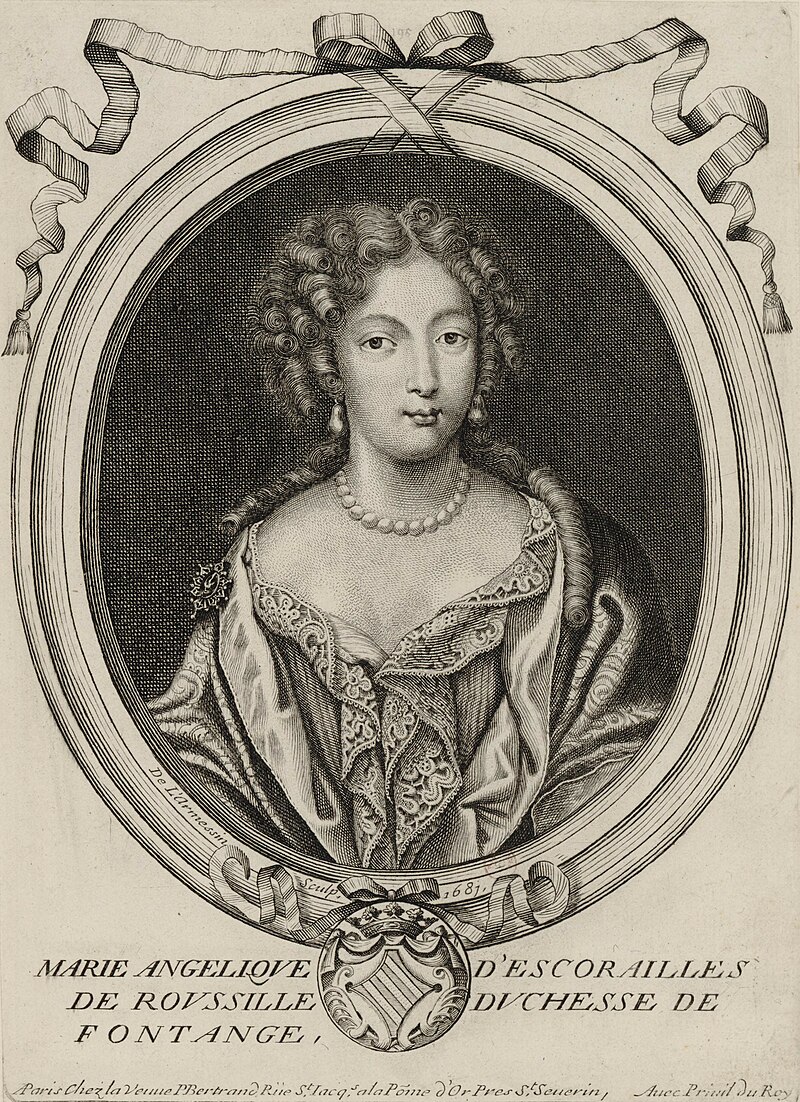 Unfortunately for her, and due to her obvious lack of intelligence, Mademoiselle de Fontanges made herself many enemies at once. With her new status, she thought herself above everyone else, including the Queen, who she did not salute anymore, and spent her money as quickly as she got it. She became incredibly arrogant and even put Madame de Montespan to shame with her behaviour. Marie-Angélique became the laughing-stock of the whole court… and also Madame de Montespan became a subject of laughter as she lost her temper over Marie Angélique’s extravagances.
Unfortunately for her, and due to her obvious lack of intelligence, Mademoiselle de Fontanges made herself many enemies at once. With her new status, she thought herself above everyone else, including the Queen, who she did not salute anymore, and spent her money as quickly as she got it. She became incredibly arrogant and even put Madame de Montespan to shame with her behaviour. Marie-Angélique became the laughing-stock of the whole court… and also Madame de Montespan became a subject of laughter as she lost her temper over Marie Angélique’s extravagances.
One evening la Montespan got into such a rage, she confronted Louis XIV with a scene about Marie-Angélique’s ridiculous behaviour and the open contempt Marie-Angélique showed for her. Louis tried to calm her by making her surintendante de la maison de la reine and granted her the right to sit in presence of the Queen, something only Princesses and Duchesses were allowed to do. It did not calm her much and she led two tamed bears, a present from the King, into the apartment of Marie-Angélique. They destroyed it completely and the court laughed about Madame de Montespan’s jealousy.
She did not take it, of course. Seeing that scenes of jealousy got her nowhere and bored the King, she decided to befriend Marie-Angélique instead… just like she had done with Louise de La Vallière back in the days. Naive as Marie-Angélique was, and thinking her bad behaviour towards the Marquise was forgiven, she happily became her friend. Madame de Montespan also managed to come to an agreement with her other rival Madame de Maintenon. Both, for different reasons, wanted Marie Angélique gone and thus Madame de Maintenon approached her one day to urge her to give her passion for the King up. For the sake of her soul, of course. “Madame, you ask me to rid myself of a passion as one takes a shirt off! Do not you know anything about the movements of the heart?” was the reply.
Mademoiselle de Fontanges had no desire to give the King up at all… and she was pregnant. A child would strengthen her position at court. No matter what would happen to her then, whether she would fall out of favour or not, the King would still support her for the sake of his child.
As she saw it in her dream, Marie-Angélique’s downfall began shortly after. The child she was carrying, a boy, was born early, either towards the end on 1679 or in January 1680, and died. The birth was not an easy one either and Marie-Angélique lost a lot of blood during it. The court mockingly regarded her as ‘wounded in service‘ afterwards. Marie-Angélique’s health declined swiftly from this point on, but the show must go on and Louis XIV never cared much for the maladies of his mistresses.
In February 1680, Mademoiselle de Fontanges, although suffering of strong fevers, was all dolled up again and travelled with her lover and his wife to meet the bride of the Dauphin. Mademoiselle de Fontanges travelled like a Queen. Her brand new carriage was drawn by eight horses and fashioned in the colours of her coat of arms, several other carriages followed her own and carried clothes, jewels, maids, servants, and expensive furniture. She went hunting with the King, danced at balls, and decorated herself the best she could. Madame de Montespan became furious once more and crushed her rival by dancing as graceful as a nymph, while Marie-Angélique shuffled rather awkwardly.
Her declining health and beauty, turned Louis XIV a little off shortly after. It also dawned on him that what he found enchanting about her, her naive charm and childlike ways, was actually caused by a lack of intelligence. He suddenly began to long for the witty jests and amusing conversation of Madame de Montespan. Marie-Angélique did not quite get that it was a good-bye present as she was made a Duchesse, like Louise de La Vallière before her, on April 6 in 1680. A pension of 80,000 livres followed.
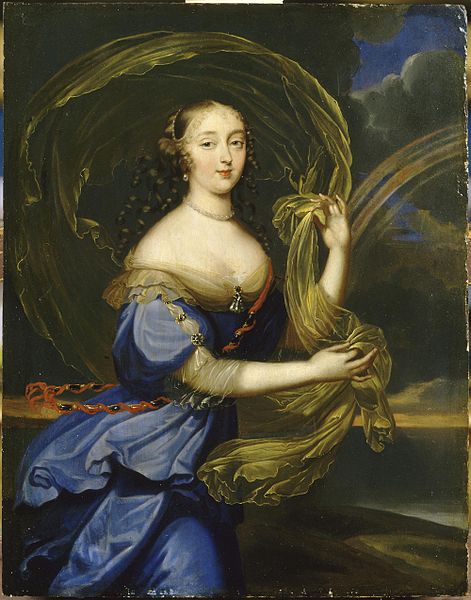
Louis XIV returned to his other two love-interests and the new Duchesse de Fontanges was swiftly forgotten. Marie-Angélique left court for the abbaye de Chelles, where one of her sisters comforted her and she wept about her cruel faith. It is said that Marie-Angélique was nearly poisoned there. To regain strength, her doctor brought her six bottles of mineral water one evening. The next day it was discovered all six bottles contained poison. Marie-Angélique luckily had not a single sip of the water. It was never discovered who put the poison into the bottles, but after the affaire des poisons kicked off many suspected it might have been Madame de Montespan.
Narrowly escaped with her life, the Duchesse de Fontanges returned to court in August to find Louis XIV had found a replacement for her. The King now spent many hours in company of Madame de Maintenon and the court rumoured that the occasional visits he payed to the returned Marie-Angélique were only due to feelings of charity.
According to court rumours, those visits nevertheless ended with another pregnancy and stillbirth, this time a girl. Whether that is true or not is hard to say. Some courtiers deemed it false because Louis XIV seemed to have forgotten his former romantic feelings already. True or not, Marie-Angélique’s health declined again and she suffered once more of strong fevers. Taking the advice of her confessor, she returned to the abbaye de Chelles. The once beautiful Marie-Angélique was now a shadow of her former self and died shortly after in the night of the 27th to June 28 in 1681.
She was buried in the chapel of the Abbey of Port-Royal in the Faubourg Saint-Jacques in presence of the Duc de Noailles. One year after her death, Louis XIV granted an annual 6,000 livres to the nuns of Port-Royal and charged them to hold a service each year for the poor soul of the Duchesse de Fontanges.
The story of the Duchesse de Fontanges does not end with her demise. As the extent of the affaire des poisons and the connections of poison-mixers to the grand dames of the court became clear, rumours started to grow louder about Marie-Angélique’s death. Many suspected Madame de Montespan to be responsible for it by poisoning milk after the first attempt with water had failed. Those rumours also reached the ears of Louis XIV, who then ordered that no autopsy to be performed and thus created more doubts the cause of death was natural. Marie-Angélique’s family had autopsy performed nevertheless, during which the cause of death was stated to be tuberculosis, leading to ‘a total rot of the right lung lobes‘ increased liver size and water around the heart.
Today, we can say that the reason for her demise has most likely to do with her pregnancies and the possibility of a fragment the placenta having remained in her uterus, which would explain the reported constant bleeding she suffered of. A other possible reason for her death, might be a rare form of uterus cancer or indeed tuberculosis. Poison was most likely not the cause.
A little titbit at the end: According to legend, the ghost of the Duchesse appeared to Louis XIV in 1695. The King had just crawled into bed as her ghost appeared to him with two messages, the first being that she was rather upset he had forgotten her so quickly, because after all he had told her she was the one he loved the most. She second being that she was now in purgatory and the days of Louis’ reign soon over, he would join her soon in purgatory and she would wait for him. The only person who could save him from this fate, she said, was Madame de Maintenon, adding that Madame de Montespan had poisoned her and he should fully forsake her and look to God.

